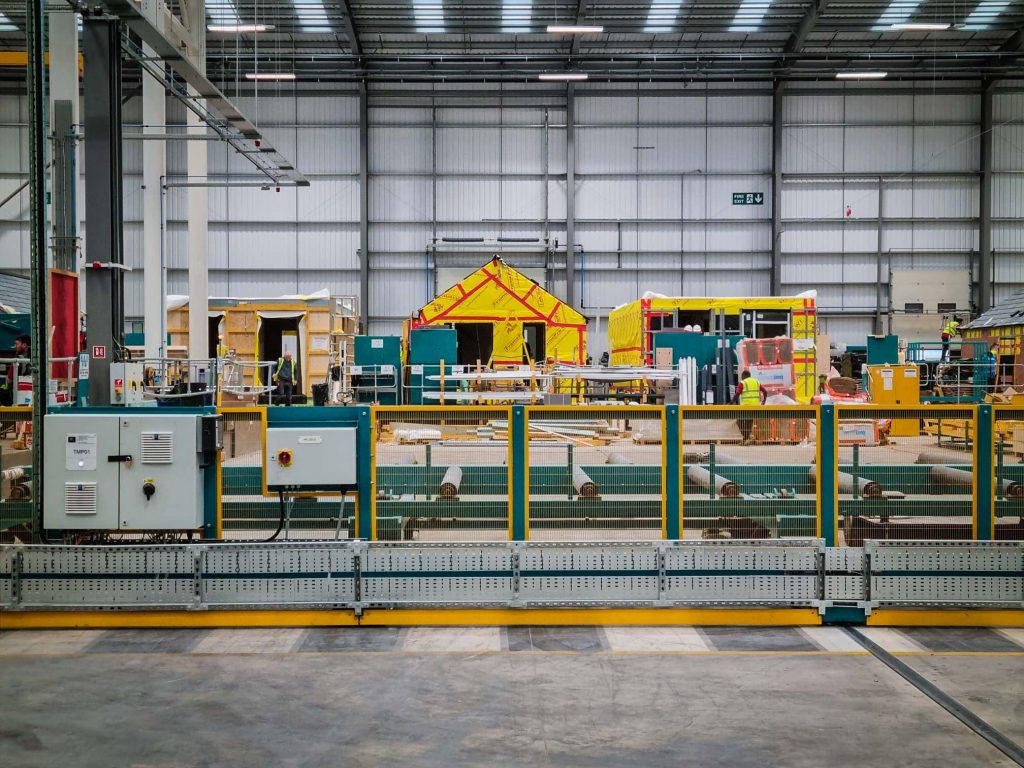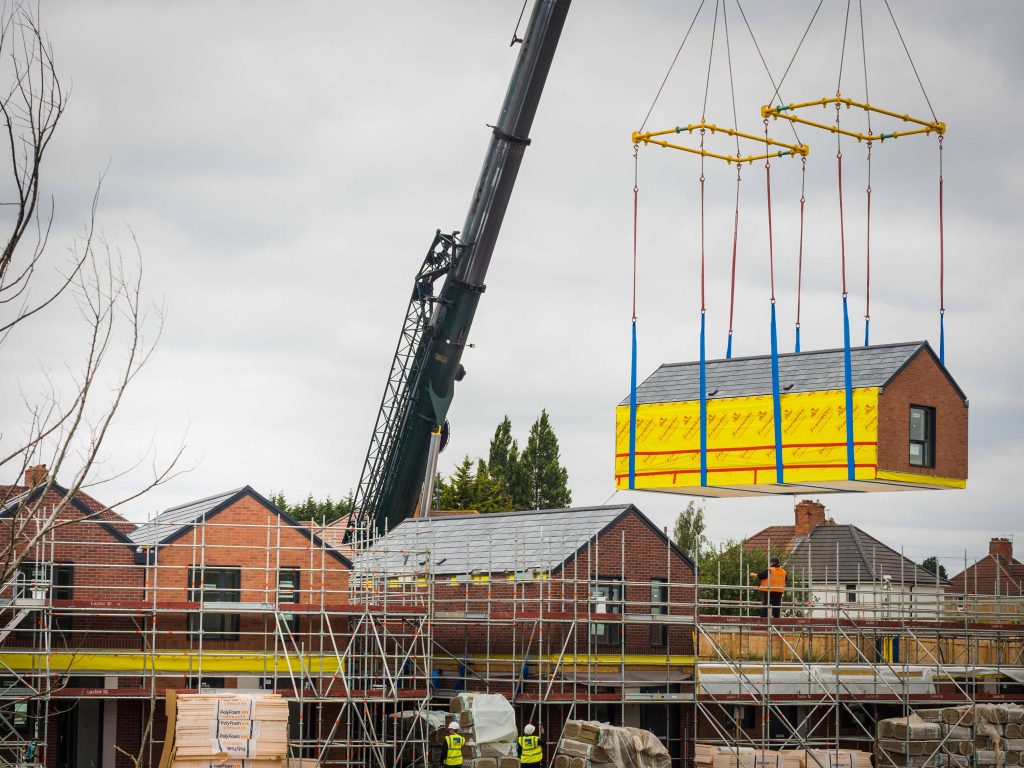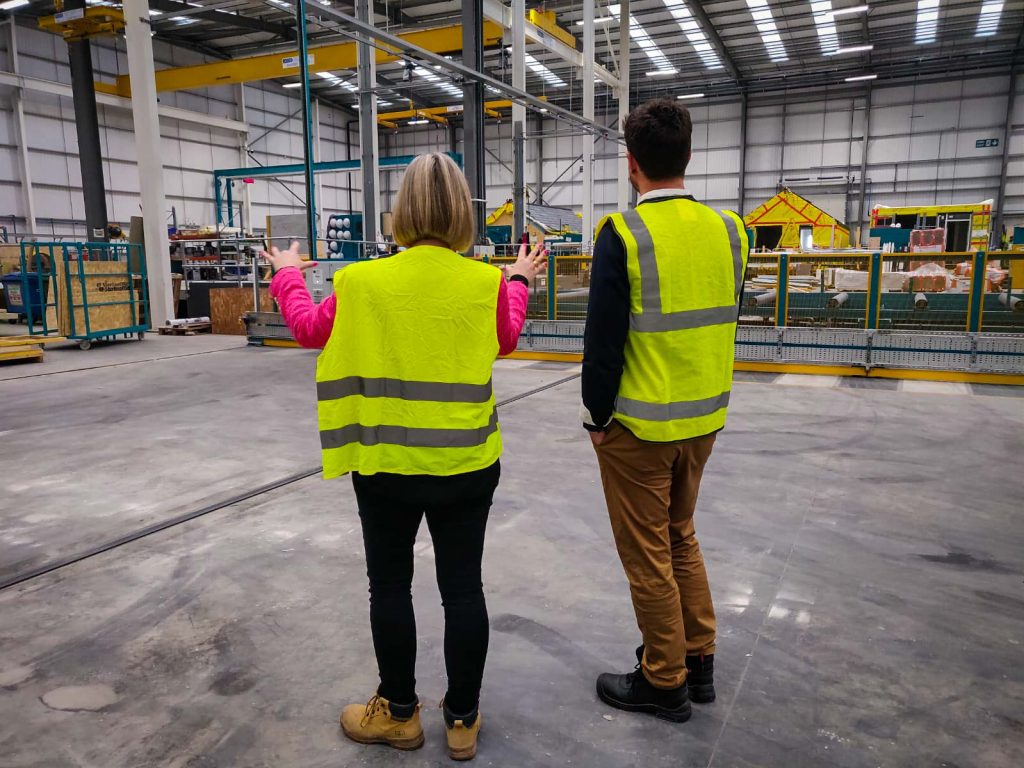Traditional construction practices are emission-heavy. Switching to modern methods of construction (MMC) can help mitigate our impact on climate change, but what does that look like exactly? We turned to CityChanger Trina Chakravarti, Project Director for Building Better and MMC advocate, to find out.
The UK is in the midst of a housing crisis. There aren’t enough dwellings to accommodate the growing population – the country needs 300,000 new homes per year to meet demand, 145,000 of which must be affordable housing. At this rate, they clearly need to be quick to construct. Adding complexity, these homes should put people first with energy-efficiency and comfort at the heart of design. How is this possible? That was the challenge faced by Trina Chakravarti when her team embarked on Building Better back in 2018.
The (Good) Greenhouse Effect
Trina works for the National Housing Federation, a membership body for around 800 housing associations (HAs) in England, which provides homes for almost six million people. In 2018, she participated in the Federations’ 16-week project The Greenhouse. This teamed up innovative individuals from member associations to generate ideas intended to tackle some of the biggest social housing challenges. One being the sheer lack of it.
Born from the recognition that business-as-usual building was no longer keeping pace, Trina’s taskforce was assigned the supply challenge: how to quickly build high-quality housing “that meets the needs of the people that live in them”.
“Traditional construction simply cannot get us to the government’s target of 300,000 homes per year, it’s impossible.”
“That was pretty much the birth of Building Better.”
Building Better
At first glance, Trina admits, her background seems to be a far cry from the construction world: communications, marketing, product development. But these are exactly the skills required to galvanise a group of disconnected individuals from different housing bodies that don’t realise they ultimately want the same thing: provide local people decent homes through a different means of construction.
Establishing collaboration between these organisations was no easy task. Housing associations and local authorities commonly view what they expect from builds as a mismatch because of long-established design differences (known as design requirements, employer requirements, or ERs) and unmatching perceptions of residents’ needs.
Assumptions blocked innovation. There was a general preoccupation, for example, that HAs may be able to agree standardised designs. The National Housing Federation wanted to know for sure, so Trina got to work inviting HAs from around the country to a workshop on the red lines in design requirements. The response was overwhelming, hinting at the scope for redefining approaches.
This established the baseline of the project: collaborate to test and experiment with ideas that meet the demand for new homes; around “aggregating our pipeline and working together to make it easier to access modern methods of construction as a group,” Trina explains. But what exactly are modern methods of construction?
MMC Explained
It goes by many names: “MMC or modern methods of construction or building off-site or precision manufacturing,” our expert tells us. All describe the same thing: an alternative building model with elements being ‘re manufactured’ away from the destination site.
Imagine you have a plot of land. You want to build a house. Instead of multiple separate deliveries of bricks, cement, tiles, wood, wires, pipes, etc., all the materials are stored in a single warehouse or factory. This is where the walls, roof, and floor are made. These components are then delivered to and fixed in place on the building site in a fraction of the time compared to traditional methods.

MMC reduces waste by around 90%, Trina has learnt, and carbon emissions are reduced by up to 60% thanks to more efficient delivery and construction processes. Environmentally, it’s an attractive option. Fully-insulated walls and other energy-efficient components also provide “much improved quality” and operational performance.
A Fresh Approach?
Our CityChanger notes that MMC is not new; the concept has been around since mid-20th century. Nor are attempts to collaborate. So, why then hadn’t it got off the ground before? Trina was determined to find out. She did what many before hadn’t: she asked. Two issues emerged.
Dormant Design Requirements
MMC supply was still in its infancy. This meant HAs with detailed employer requirement designs wouldn’t get their exacting specifications met. Likewise, it just wasn’t financially viable for manufacturers – who had already spent hundreds of thousands on developing a product – to change it for each client.
“We thought, okay, instead of fighting this, why don’t we just get housing associations to give us their employer requirements and compare them?” There turned out to be an 88% overlap between what each HA wanted. From this, Building Better was able to provide manufacturers with a high-level performance specification.
Use the pre-existing MMC products to reach 75-80% of your design requirement, Trina advises, and “then work with the manufacturer to get to 100% of what your ambition is”. Small alterations are far more manageable.
Right Time, Right Place, Right People
Trina uncovered a consistent failure to get the right organisations on board. Some just aren’t ready and it’s no use forcing them. We need to accept that sometimes boards are reluctant, skills are missing, bureaucracy bogs down change.
“If you go to the majority to lead, you’re going to fail because they’re not quite there in terms of culture and agility.”
Our expert discovered something valuable: it’s best to focus on the few who can and do.
Building Better’s success depended on teaming up with the right people. Work with those brimming with boundless motivation who can give the project momentum, Trina tells us. Team with the individuals who can leverage further support with their charisma and autonomy. Let them lead by example and change attitudes internally and across partnerships.

Building Together
By bringing together housing associations to streamline and strengthen the procurement process, Building Better created a procurement process that allows housing associations to choose manufacturers providing products that really do suit their needs.
The three manufacturers working with Building Better are all working to net zero standards, as per the design requirements shared by most members. They were selected carefully by “doing something that’s called competitive dialogue” at the procurement stage. This took the form of time- and resource-intensive deep engagement with each of the shortlisted manufacturers “to understand what their needs are”. It was a worthwhile investment.
Securing the best-fitting manufacturers creates reassurances at the final tender stage in proposals “that genuinely worked for the supply side as well”.
It resulted in the creation of a commercial model with a mixture of fixed and non-fixed features, which is genuinely scalable and meets the needs of multiple associations.
It’s not surprising then that “everyone kind of knows MMC will have to play a part” in the future of construction, Trina reflects. The project membership now stands at around 30 HAs and local authorities who all want in on the act!
By teaming up these associations, Trina and her team have also facilitated the development of resources such as checklists for clerks of works and project cost-builder tools. Doing this individually, HAs would spend significantly more.

The Big Wide Construction World
Building Better is a flagship project. It set out to build 100 MMC homes in the first year and a further 200 in the second to demonstrate what can be achieved. MMC still has a long way to go before it’s mainstream, though. Trina started a “rigorous process of trying to understand what the issues were” in holding back transformation in the construction sector. Three themes stood out:
Risk Ownership
Contractors are generally lumbered with all the risk. Housing associations (sub)contract out the responsibility for delivery meaning builders carry all of the burden for any misgivings. This imbalance doesn’t provide a basis of trust upon which innovation can bloom.
Skills Crisis
“Housing associations say it’s quite hard to hire and retain really good development staff, particularly staff that can do land-led delivery,” Trina laments. MMC utilises a different workforce demographic and the clean factory work settings have been successful at diversifying the workforce too.
Design for Adaptability
People’s needs change. From resident to resident, and for individuals over time. Trina sees a “massive lost opportunity” in not designing homes that flexibly cater for these amendments and attitudes that match.
Building for the Future
There’s still work to be done if we’re to overcome these barriers. What else lies in store for the world of tomorrow? We’ve only just started with MMC, Trina believes. Building Better’s ‘Our Vision 2020’ paper sets a target for building homes 50% faster. Progress hinges on the whole ecosystem coming together. The “government has already started supporting housing associations financially to do this”. What else needs to happen?
Invest Today, Save Tomorrow
Housing associations are long-term asset owners, Trina points out. “We own these houses pretty much in perpetuity.” In recent years, HAs have realised they need to incorporate sustainable construction in their strategies and business goals. It’s imperative they “think very hard about how they build today”, to mitigate the need for expensive retrofitting in the (near) future:
“If we get the quality right from the outset, it means we spend less on improving, repairs, maintenance. And that means we can build more houses and do more in the communities that the housing associations serve.”
A Date with Data
Housing associations and manufacturers have never been good at collecting imperial evidence at scale around quality and longevity, Trina reflects. However, she recognises that “some really clever people have pulled together some really good sets of data already”. It’s better to build upon this than start from scratch.
The UK Government body Homes England is building 1,800 units to study “a set of 15 metrics around delivering those homes,” testing the long-term performance of MMC. Building Better draws from this data and that from the Construction Leadership Council’s smart construction dashboard to get insights into cost, quality, and delivery times. Trina is “also looking at things like energy consumption and waste” and the most important metric of all: the customer experience.
Our CityChanger believes we need to stop just asking if residents are satisfied when they first move in. Instead, we should be “thinking about a really robust way to understand how people experience living in MMC-built homes and using that information to make sure that the designs get better over time”. Working with stakeholders to determine how that feedback loop looks and how it can be used to scale up the market will be essential.
Modern Methods of Maintenance
“I’d also like to get to a point where we can be really clever with our repairs”, says Trina. She wants the digital footprint within buildings to advance pre-emptive maintenance. The knowledge is already there, we should use it.
“If we’ve already got on a system when the component was installed, when it’s likely to fail, we can start to be really proactive with asset management repairs.”
This beats the traditional process of calling a service helpline, waiting for a visit and assessment of the damages and faults, and then waiting again for the repair. Trina’s suggestion is far more efficient and resident-friendly.
Trina is also excited by the promise of new technological leaps like 3D printing and how the social housing sector can pioneer using it to provide and maintain better quality buildings.

Expert Advice
From Building Better’s ongoing experiences of exploring MMC processes, Trina is happy to share with us some final words of advice:
Design
Failure to get the design right dooms a project from the start. This can be circumvented by adhering to a handful of tips:
- Build to “the common performance specification”.
- Research the existing market to “understand what design is out there”.
- “Focus on really high-level performance, rather than getting too much into the nitty gritty.”
- Pull together collaboration “not just from the demand side within housing associations and local authorities”, but also “take a genuinely collaborative approach with the manufacturers as well”.
- Engage early with all of the relevant stakeholders including manufacturers as well as architects
Experiment
As if to bring us full circle, it’s important to “test your ideas and experiment around where you think the assumptions are”. Be bold. Question the established norms. As Trina has shown, unpicking stubborn baked-in challenges “in small ways, and going back to where you can find common ground” with others facing the same problems can lead to huge change.
Modern Methods of Construction in a Nutshell
MMC seem something of a magic formula. They provide a means to fill the gap in social housing provision while almost as an afterthought diminishing the harmful environmental impact of construction. Probably most importantly, Trina proved that galvanising relationships between stakeholders results in better standards of living for some of the most vulnerable in society. If we take time to understand the market, improve supply lines, and design products that meet occupants’ needs, MMC may yet be the future of sustainable property construction.
If you’d like to know more about the challenges of MMC and learn Trina’s approaches for overcoming them, head to our companion article.


